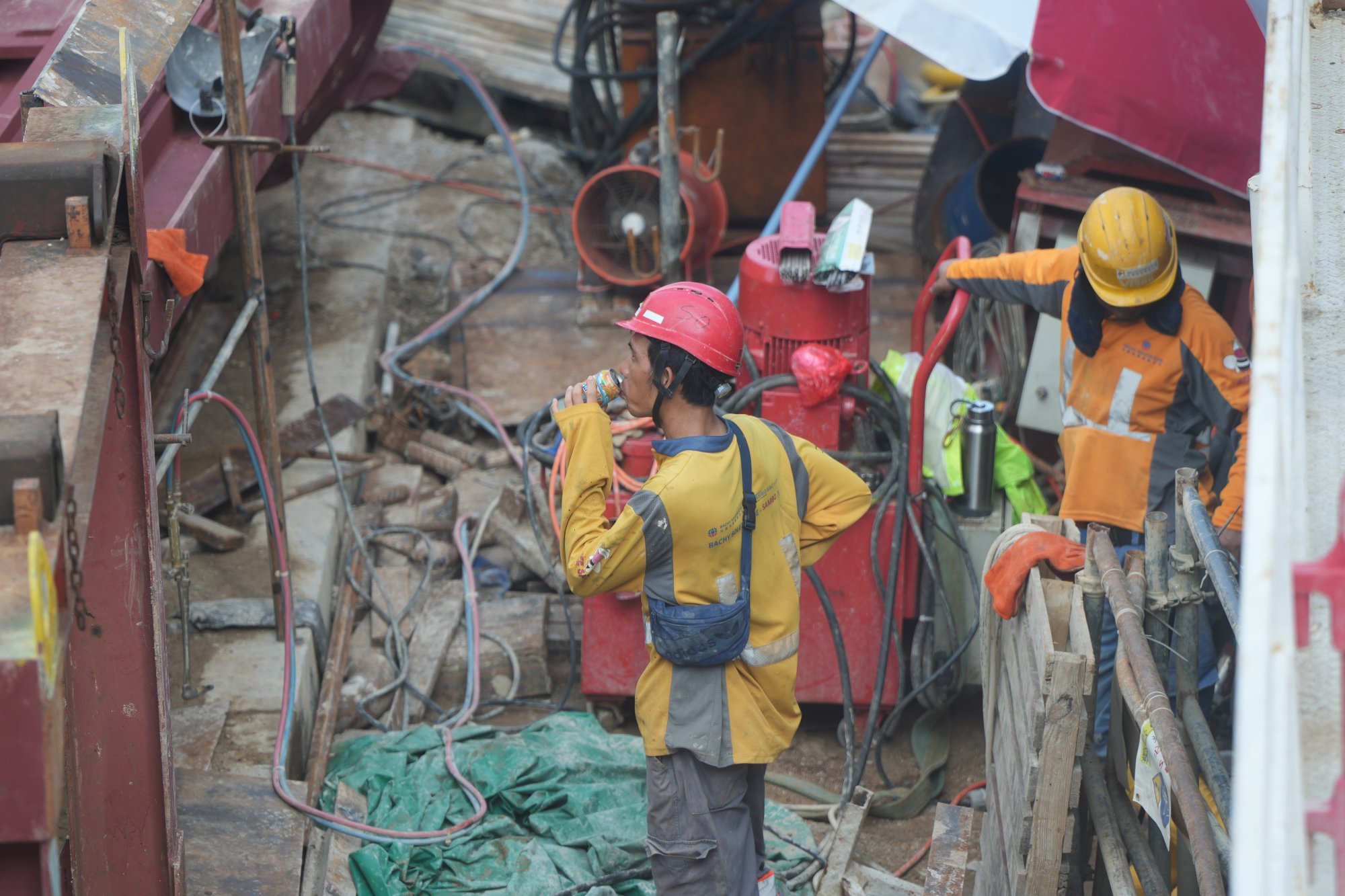Hong Kong on Friday briefly issued its second amber signal under a new heat-warning system after the first alert a day before went unnoticed by many workers, amid calls from industry leaders for authorities to strengthen public communication.
The latest amber signal was issued at 10.40am and cancelled an hour later, with the Labour Department appealing to outdoor labourers and those working close to heat sources or in environments without air conditioning to take appropriate measures to prevent heatstroke.
Under the new guidelines launched on Monday, workers are advised breaks of 15 to 45 minutes per hour with the amber alert in effect, depending on their categorised level of job intensity.
Do you have questions about the biggest topics and trends from around the world? Get the answers with SCMP Knowledge, our new platform of curated content with explainers, FAQs, analyses and infographics brought to you by our award-winning team.
Are Hong Kong employers prepared for new anti-heatstroke guidelines?
“Employees who work outdoors or in non-air-conditioned indoor environments face high levels of heat stress and are at a relatively higher risk of heatstroke,” a spokesman earlier said.
“Employers should assess the risk factors of heat stress for employees at work and, based on the identified conditions, take necessary preventive and control measures.”
Arrangements included rescheduling work periods, setting up shelters, providing ventilation and heat dissipation equipment, as well as reminding employees to get adequate water intake and rest in a timely manner.

But some outdoor workers were left confused on Thursday as they were unaware Hong Kong had issued its first amber heat signal under the new system. The alert, which follows a newly developed heat index, was issued at 1.50pm and cancelled at 3.50pm.
Lam Chun-sing, a lawmaker and chairman of the Federation of Hong Kong and Kowloon Labour Unions, said some workers did not notice the signal until 3pm, after news of it was shared on social media.
“Many workers didn’t know how to respond to the amber signal. Even more people didn’t know which level of labour intensity their jobs belonged to,” he told a radio programme on Friday.
Lam added that the new guidelines had been implemented so hastily that management did not have enough time for proper preparations. He recommended that human resources personnel in companies explain the intensity of jobs to new employees more clearly before they were allowed into the field.
He also suggested the Labour Department strengthen promotion work on the system.
Hong Kong can sue bosses who don’t follow new heatstroke guidelines: minister
Hong Kong Construction Association executive director Godfrey Leung King-kwok told the same programme: “I knew about the alert only after it was cancelled. We hope the Labour Department will further explain to the industry how to implement the new guidelines.
“We have demanded that the Construction Industry Council help coordinate a sit-down with the Labour Department, Development Bureau and pertinent unionists concerning how to carry out these measures.”
He added that many outdoor workers, especially those at construction sites, might find it hard to know when a signal was up, because most did not carry mobile phones at work, and their job environment was noisy.
He also insisted the guidelines were so complicated that many sites were only trying to implement the recommended relief measures.
Will this year be one of Hong Kong’s hottest ever? ‘High chance,’ Observatory says
A check by the Post on Thursday found some workers at two construction sites in Quarry Bay and Kai Tak were unaware of the signal and rest periods suggested under the guidelines.
A street cleaner told the Post her supervisors had not mentioned the new procedures. She was seen working non-stop after she clocked in at 3pm, with the amber signal still in force.
The Food and Environmental Hygiene Department on Thursday said it had sent a reminder letter to contractors with information on the guidelines. Contractors who failed to provide occupational safety to employees would be held accountable, it warned.
What’s wrong with Hong Kong’s weather? The effects of climate change
The Observatory said on Friday it expected high humidity and abundant sunshine. Temperatures in urban areas may be higher than those on Thursday.
Observatory senior scientific officer Yeung Hon-yin pointed out temperatures were not the overriding factor affecting the heat index, with other considerations being humidity, air circulation and solar radiation levels.
Even if the temperature in two places were the same, the heat index could still vary with wind speed, sunlight and humidity, he said.
Yeung said, based on Observatory records, the city would usually experience five days in May with conditions that could trigger an amber heat signal. But in July, Hong Kong could see up to 17 such days, he added.
More from South China Morning Post:
- Hong Kong’s outdoor workers left confused, unaware of first amber signal under new heat warning system
- All hot and bothered about Hong Kong’s new heat warning system for workers? Here is what you need to know
For the latest news from the South China Morning Post download our mobile app. Copyright 2023.





